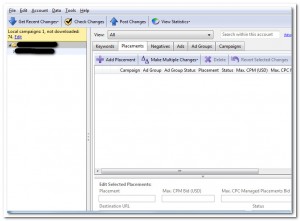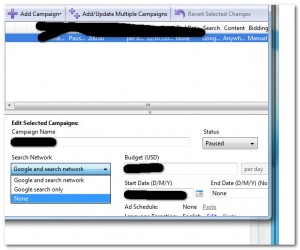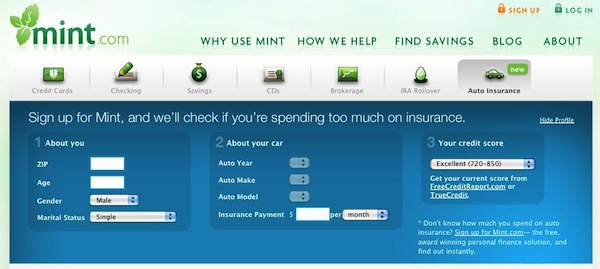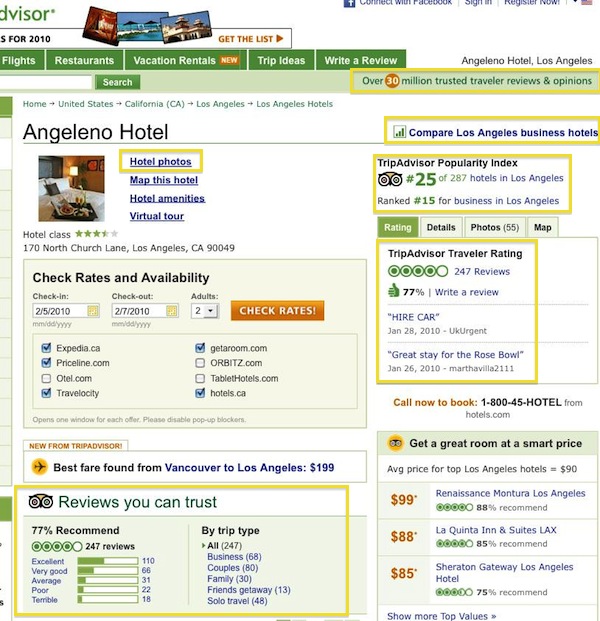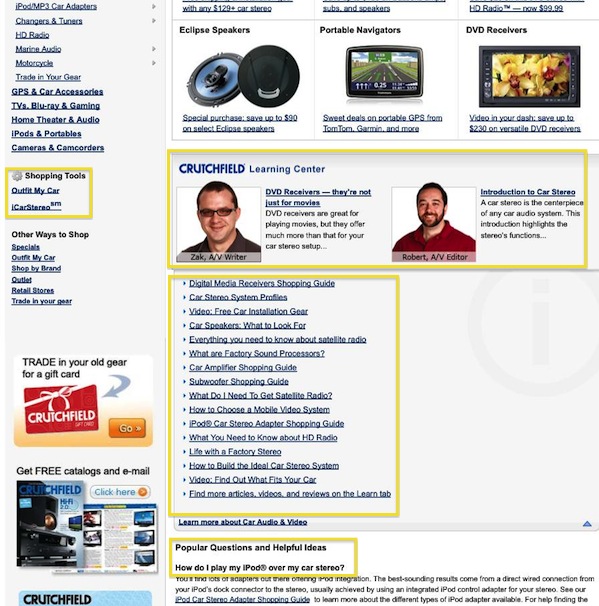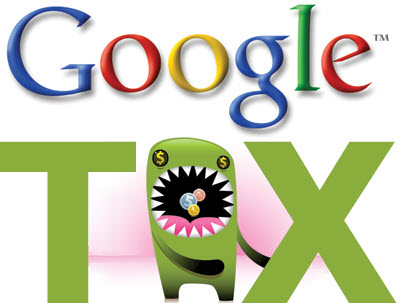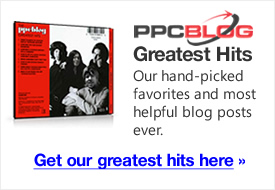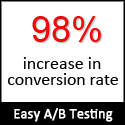You may have come across get-rich-quick books telling you how you can make a fortune in affiliate marketing. Hand over $97, and you’ll get “the secrets”.
We’ve decided to give you “the secrets”, and charge you $0 instead. We’re good like that 🙂
This article is aimed at those who are new to affiliate marketing with PPC.
What Is Affiliate Marketing?
Affiliate marketing is a sales process.
Like a salesperson working on commission, the affiliate marketer links a prospect with a merchant and receives a commission if the prospect takes a desired action. This typically involves buying something.
The attraction for the affiliate is that they can focus entirely on marketing. Unlike the merchant, the affiliate doesn’t need to hold stock, handle orders, or deal with customer issues and complaints.
Many affiliates are attracted to PPC because it is a channel that allows people to start selling immediately. Set up a few ad groups, direct visitors to the merchant site, and watch the cash roll in.
Sounds easy, right?
Most Affiliate Marketers Don’t Make Money
It’s not as easy as some people, particularly those selling get rich quick schemes, like to make out. Even some of the better affiliate blogs tend to make it sound easier than it is (because they want you to sign up for lots of tools and networks so they get commissions). It is probably one of the hardest markets to get good information in because the answer to every question is on the other side of an affiliate link. Literally. 🙂
Whilst it is true that top affiliates make a lot of money, there are very few top affiliates. The top affiliates don’t just earn a little more that those people further down the curve, they earn a lot more. The curve falls away very quickly in terms of income.
Why does this happen? Why do most people fail to make money at affiliate marketing, and some people make so much? How can you ensure you succeed where others fail?
How To Do Well At Affiliate Marketing Using PPC
Affiliate marketing requires two key pieces of know-how.
- Step One: Develop a sound knowledge of PPC technique
- Step Two: Develop a sound knowledge of the market you’re targeting
If you’re new to PPC, then it is a good idea to split these tasks up. It will make it much easier to isolate and fix problems i.e problems relating to execution, as opposed to your choice of market, and vice-versa.
Step One: Develop A Sound Knowledge Of PPC Technique
Focus on learning these skills:
- 1. How to use your chosen PPC system
- 2. Keyword research
- 3. How to write effective PPC Ads
- 4. How to construct effective landing pages and sites
How To Use Your Chosen PPC System
For this article, we’ll focus on Google Adwords, the most popular PPC network. Most PPC systems work in a similar way.
If you haven’t already done so, sign up for a Google Adwords account here.
Next, go through the process of becoming Adwords Certified. Even if you don’t need the certification badge, the training process to certification level is excellent.
Best of all, it is free (well everything but the test).
Here is the tricky part: Google is saturated with competition and Google hates most affiliates, so it is typically easier to make money as an affiliate on other ad networks (like Bing or FaceBook).
And even when successful with Google, affiliates tend to have better luck on contextual/AdSense ads than with ads on the search results/AdWords. The Google content network is not policed as heavily (largely because brand advertisers don’t understand it & Google has to show something) AND it is much harder for competitors to clone your campaigns than with search targeted ads.
Keyword Research
Much has been written about keyword research, so rather than re-invent the wheel, here are five top instructional pieces that tell you what you need to know.
You want the quick summary? Put together lists of keywords your prospective audience is likely to use to find your product and service and place them in small, tightly focused ad-groups.
A few more tips:
Pay close attention to the type of query. For example, some queries indicate a person is ready to buy i.e. coupon searches and shipping options queries. Check out this article on the Three types of searches
This is one of the most important points concerning affiliate keyword research. Not all terms relating to your product or service are equal.
For example, you can’t tell much about visitor intent if the keyword is “Paris Hilton”, however “Paris Hilton watches” hints at an intent to purchase, as it directly relates to a product.
Look for keyword terms that reveal an intent to purchase.
How To write effective PPC Ads
Study headlines in magazines and newspapers. Headlines are hooks that entice people to read further, which is exactly what you want people to do when they see your ads.
- Offer a clear call to action and make the offer compelling.
- The landing page must closely match the offer in your ad and use similar words and phrases.
- Differentiate your offer from those of your competitors.
- Use keywords in Your Ads.
- Try to use a URL that contains the keyword.
- Use capital letters in your ad title, and, where permitted, in your ad text. They stand out more.
- Use an active verb in the title, where possible.
A deeper look into writing effective ads can be found in the members area at SEOBook.com.
How To Build Effective Landing Pages And Sites
Landing pages need to get the message across quickly and effectively.
- Steal 🙂 Well, not really. Take a look at the top advertisers landing pages. Pay close attention to how the pages are laid out, the wording they use, and how they are presenting the offer. Can you go one better?
- Remove clutter. If you offer choices, people will get confused. Figure out the one thing you need to say, and stick to it. If you say three things, you say nothing.
- Bullet lists, headings, subheadings, testimonials, pictures are all good. It’s easy for the eye to scan the information. A big block of dense text, less so
- Reinforce the idea that visitors have found the right page. Place the words they searched for in large text at the top of the page. This confirms to the searcher they have found what they were looking for
Here are some great landing page resources.
Are you having trouble writing effective landing pages? There’s a book every affiliate marketing should read called “Tested Advertising Methods“. It’s a direct marketing bible about writing sales copy written in the 1930s. It looks at the psychology behind direct response advertising which is still valid today, even if most of the examples are rather outdated.
Part Two: Develop A Sound Knowledge Of The Market You’re Targeting
Understanding The Market
You may have already tried your hand at affiliate marketing using PPC. Were you frustrated by few sales? Did you run well-researched keyword campaigns that you then turned off in order to stop hemorrhaging money?
These are common experiences.
The main skill that separates good affiliate marketers from poor ones is the ability to understand and test a market.
How To Test A Market
Whilst there is a lot of trial and error involved in understanding a market, the good news is that you don’t need to understand all these aspects before you start. By doing, you’ll see things you’ll never see by standing back.
Treat your first few weeks as a training period. Accept that this training period will likely cost you money in the form of bids – but you are buying data cheaply. It need not cost you much, and you may well make a profit, but try not to put pressure on yourself to achieve this goal during the training period. Your first goal is to understand the tool and the PPC environment.
Did you know that a lot of affiliate marketers aim to break even on new campaigns?
Yes, you read that right – break even!
By breaking even, it signals that the area being targeted has potential. Affiliates then refine campaigns until they move from break even to profit. Chances are if a merchant is paying $50 per lead, they know that is costs around $50 for you to get that lead, too.
When choosing a product or service to trial whilst you are learning, look for low payouts – say, $3. Why? It’s far cheaper to make mistakes! Remember, the merchant is signaling that they think they can get the lead for around $3 if they did it themselves.
Your aim is to break even at $3. If you go over – say to $9 – without getting a conversion, you haven’t blown too much money. The same cannot be said if you were targeting a lead that pays out $100!
If you spend $50 on a $3 dollar per lead pay out and have a cost per conversion of $5, you can pause the campaign and examine what went wrong. Were you getting click-thrus, but losing people at the landing page? Your landing page and offer needs work.
Were you receiving few click-thrus? Refine your bidding and ad text. Re-nenable the campaign.
This time around, you may get down to $4 before you get a conversion. Refine, then re-enable.
Down to $3 yet? Great! You’re at break even, and you’ve still spent less than $100 testing a market. Get down below that $3 and you’re making money.
If you can’t get down to break even, even after a lot of tweaking, quit and move on. The market for that product might be so saturated that the margins are virtually non-existent.
Look for sweet spots – areas in which it is easy to break even, and then refine into profit quickly.
Market Knowledge
How well do you know the market for the service or product you are marketing?
Who is the buyer? What are their needs? Why are they buying over the internet rather than from a store? Why are they seeking out an unknown site as opposed to going to a big internet retailer, like Amazon?
These may seem like obvious questions, but the reality is that not everything sells well over the internet.
Any product or service that requires a high level of trust, or high levels of “touch” – a car, for example – will be difficult to sell online. Look through direct marketing trade journals and catalogs for clues. What types of products are services are selling well via mail order? What services and products are telemarketers selling? Chances are these products and services will sell well on the internet, too.
Put yourself in the position of the buyer. What would make you buy from a previously unknown web site? Typically it’s due to reasons such as convenience and scarcity. If your chosen merchant doesn’t meet the criteria, then pass and move onto another who does. If a merchant offers something a buyer can easily get elsewhere, then you’ll be exposed to a great deal of competition.
But Aren’t I Too Late To Do Well At PPC?
You may hear stories about how the market was back in, say, 1999, or 2003, or 2005. Low hanging fruit was everywhere, and the Adwords system -introduced in 2000 and heavily revised in 2002- didn’t have a lot of the complexity and bid competition wasn’t what it is now. People were making a lot of money relatively easily.
Whilst things have changed, it’s never too late to start.
Why?
New opportunities pop-up every day. New markets are emerging continuously. People are heading online to solve more of their problems. Whilst there are problems to be solved, there is money to made.
How do you find new, emerging markets? Top converting offers on affiliate networks and affiliate managers tell you what is working.
Further, Google Trends is a useful tool for predicting rising interest in keyword areas. Google Insights For Search allows you to drill down into the data, including by date, by region, by category and by source.
Microsoft Ad Intelligence and Google Adwords provide seasonal trends.
Paid research tools, such as Keyword Discovery, provide historical data, as do Compete.com and WikiRank.
For a longer article on trend spotting, check out How To Spot Keyword Trends.
The internet is still a baby taking its first steps. PPC is even younger.
Jump in 🙂
The Importance Of Google’s Rater Document
Google employs teams of quality raters. A quality raters job is to manually review search engine result sets and web sites to ensure the algorithms are selecting the sites Google favors.
Obviously, it pays to have a site that Google favors.
The Google quality raters follow guidelines provided by Google. These secretive guidelines have sometimes found their way onto the web.
Of particular interest to affiliates is Google’s stated dislike of thin affiliate sites. Thin affiliate sites are sites sites that offer no value to the searcher, other than providing another “door” for the merchant site. These types of sites typically replicate the catalog of the merchant site.
Google regards these sites as spam.
From the quality rater document:
State your reason for assigning “Spam”, “Maybe Spam”, and “Malicious” flags. For example,
– Sneaky redirect to eBay
– Amazon thin affiliate”
“Major cosmopolitan cities are preferred targets for spammers, especially hotel affiliates. Such results should be labeled as Spam, even if they have relevance to the query – e.g. a hotel affiliate page with a list of Chicago hotels may be Relevant”.
Whilst this criteria applies mostly to SEO pages, a similar Google philosophy applies to PPC. Google doesn’t want identical, low value PPC pages and will punish them.
To get around this problem, beef up the value of your page and/or site to the user. Provide context and extra information. For example, you could offer side-by-side product reviews.
Become “fat”.
The quality rater document offers the following specific suggestions:
Pages should generally not be marked Spam if they provide added value. Added value refers to original or other useful content on the page, regardless of whether there are PPC ads. Examples of content that provides added value include:
- Price comparison functionality: Even though the user has to go to another site via the affiliate link to place
an order, there is value to have price comparisons right there on the page.
- Product reviews: Pages that provide original reviews offer added value. Items that are commonly reviewed are books, electronics, and hotels.
- Recipes: Pages that provide recipes offer added value.
- Lyrics and quotes: Pages that display lyrics or quotes offer added value.
- Contact information: Pages that provide contact information, especially physical addresses and phone numbers, offer added value.
- Coupon, discount, and promotion codes: Affiliate pages that provide coupon, promotion, or discount codes for the consumer offer added value.
The Downsides Of Direct Linking And Campaign Cloning
Direct linking is when you place Adwords with links directly to the supplier site. A lot of get-rich-quick schemes recommend you take this approach, because it is “easy”.
You can make a KILLING on the web WITHOUT a website today!!!!!!!!! Wow. Buy my super insider secrets to automated eternal wealth generation system program now.
It’s only easy to set-up. It isn’t easy to execute well.
Direct linking is when the visitor clicks on the ad, is passed through to the sellers site, and if the visitor buys something, or takes a desired action, you receive a commission or payment.
This type of affiliate marketing was common when Adwords started, but Google makes this approach difficult by means of their quality score and internal editorial reviews.
The Google quality score is a metric assigned to each of your keywords. It is calculated using a variety of factors and measures how relevant your keyword is to your ad group and to a user’s search query.
People are still using direct linking, but it’s a hard road battling both established competitors and Google using this approach.
Direct linking campaigns are very easy to clone. Want to see which keywords your competitors are bidding on? Tools such as SEMRush and KeywordSpy reveal competitors bidding patterns.
Some unscrupulous affiliate networks could also steal your data to clone your campaigns. This is particularly true for the affiliate networks that push scams. If their entire business model is based on scamming people with hidden prices, rebilling fraud, and such then why would they treat you any differently?
Check out this illuminating interview in which Jeremy Schoemaker (aka Shoemoney) talks about campaign cloning:
Many affiliate networks are known for spying on their affiliates and cloning their accounts. How do you prevent that from happening?
There is nothing you can do to prevent it. I have seen it happen with my accounts a lot… the funny thing is they still can’t do what I do…. even with all the data right in front of their face. I have had affiliate managers tell me they cloned my exact keyword campaign on Google adwords with same adcopy and everything and got 1/2 the earnings per click.
In the affiliate game lots of people clone each other’s work, causing returns to race toward 0. What do you differently that allows you to see success after success with affiliate marketing?
Great follow up and glad you asked it since I almost went into this in the previous question.
First and formost testing. We spend 10-30k a day on ppc networks (and have for a long time). This testing gives you an education that you need to make it work. I can honestly give you my exact landing page and keywords/adcopy for something that is working for me right now and guarentee you can’t make it work. You don’t know what targeting we are doing… what kind of day parting… etc etc. Its not like it was 7 years ago.
This is why a lot of people are so bitter on forums. They spent a full day copying everybody elses shit and cant make it work so they whine. They dont want to actually do any real work testing stuff on their own or being creative.
It is NEVER a good idea to give your keyword data to affiliate networks. They are higher on the revenue chain than you are and have fatter profit margins, thus they can bid you out of the market. Some tools like Prosper202 allow you to host your own data.
Cost Per Action
Cost per action is when you receive a payment if a visitor takes a specific action i.e. filling out a contact form. CPA is popular because the affiliate doesn’t have to close the deal with a sale.
The problem with CPA offers is that the good ones are tightly controlled and may disappear at any time, and without notice. If a visitor only has to fill out a form, as opposed to hand over a credit card, there is plenty of scope for abuse in the form of junk leads.
Merchants aren’t stupid. When this happens, they will either cut the payout, or more likely pull the offer and work only with a small group of trusted affiliates who have demonstrated they can deliver quality leads.
In addition, some (perhaps most?) of these offers (particularly in weight loss, health, and fitness) are usually for something where the person unknowingly gets billed to their phone, or gets a free trial with a recurring subscription, etc. And eventually the FTC or other organizations step in and close down the offers.
One of the more interesting approaches to pushing legitimate CPA offers was mentioned by ShoeMoney in this interview, where he mentioned how he created a Nebraska Cornhuskers quiz where people who got a high enough score “won” a free trial to Netflix (available through his affiliate link). 🙂
Selecting Merchants
You can sign up at major affiliate networks, such as Google Affiliate Network, PepperJam and Commission Junction. Or you can scout out individual merchants by typing “[keyword] + affiliate program” (in this case: loans) into a search engine.
One of the biggest problems with affiliate marketing is the low barrier to entry. Because it is easy for anyone to sign up, then the level of competition can be huge, especially if you’re using the same big affiliate networks as everyone else.
All sounds too hard?
Well, that’s a good thing! Because if something is hard to do, it means most people won’t put the effort in that is required to succeed. The difficulty creates a barrier to your competition, too. The winners overcome that barrier to reach the other side. I recommend reading The Dip, by Seth Godin, for a good analysis of this point.
Evaluate the seller as you would any supplier you buy from. What is their position in the market? Is their offering competitive? Would you buy from them? Is their offer compelling and do they execute well? You can tell a lot of this information by looking at their website. And if you buy + test out the product you will have knowledge that 99% of lazy affiliates do not, yielding a real competitive advantage.
If the seller doesn’t look that great, skip them. They aren’t worth your time. There’s not much point advertising a high payout percentage if their offer isn’t competitive.
Affiliate nirvana is when you find a great company that has few other affiliates.
How do you find such companies?
Plenty of these companies exist, but they may not be aware of affiliate marketing, or even internet marketing. They may have a very limited web presence. Perhaps no one has ever approached them. One of the best ways to do this is to help market local businesses online.
If you know of such companies, or you can make an effort to seek them out, this puts you in an excellent position if you can sign them up to an exclusive or semi-exclusive deal. The strongest business case for an affiliate, by far, is this type of white label, exclusive arrangement.
Your protection is that no other affiliate can directly compete with you by offering the exact same products or services.
If the merchant ends the term, you retain the data and knowledge. You can then make similar offers to their competitors.
The next best thing is having a direct relationship with the merchant. Often, the affiliate network forms a barrier between the affiliate and the merchant. However, if you can get a contact at the merchant company, you’re in a better position to negotiate better deals.
Building An Audience
This approach requires the most upfront work, but it’s a model that can pay off well over time.
The affiliate builds a site that attracts a particular audience demographic. The affiliate then picks affiliate programs to suit that demographic.
Whilst this approach fits nicely with SEO, it can also work with PPC. You can use PPC to get visitors to sign up to the site, join your forum, or subscribe to your RSS or e-mail newsletter. Typically, you don’t aim to make a sale at this point as the payoff comes later. These visitors can attract more visitors, especially if you blend in viral marketing techniques i.e. make it easy for them to invite friends.
You may get to a point where you can attract the same audience the top affiliate PPC bidders attract, but at much lower cost as you don’t have to build a new audience each time. You sell different products to the same audience you already have.
Another problem affiliates face is that they do all the marketing work, but the merchant keeps the customer list.
This is why building an email list or a web site is a great approach. You can capture buyers details, as opposed to letting the visitor disappear once you’ve passed the prospect along to the merchant. Once you have these details, you can build up a buyer list that you can leverage to offer related goods and services at a later date.
Also remember that people often do not buy on the first visit, no matter how interested they are in the product or service. They may click through to the merchant – on your dime – then go off and do some price comparison, perhaps leaving their buying decision for a few days, forgot who they went to a few days earlier, and end up buying the product elsewhere.
This is why it is important to capture a prospects details. At least you retain something – the details of an interested buyer.
You can then use auto-responders to keep your name in front of the buyer. People often need to hear your name a number of times before they make a buying decision, especially on big ticket items.
Summary
Learn the PPC environment. Test and learn about the market. Run short, low-cost campaigns to start, and work your way up. Try to discover market trends early to avoid competition. Try to establish close contact with merchants. Try to keep as much visitor data and contact details as possible in order to sell at a later date if an immediate sale doesn’t occur. Make sure your site is adding value, in the true 2010 sense of the word!



